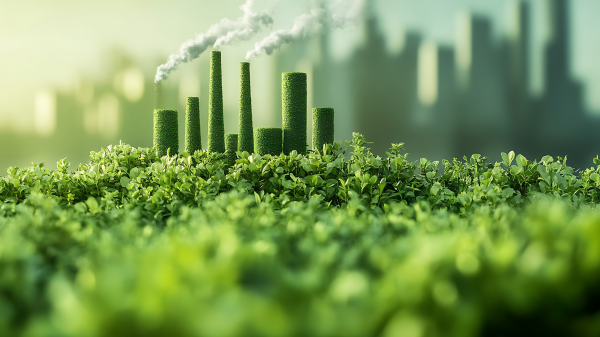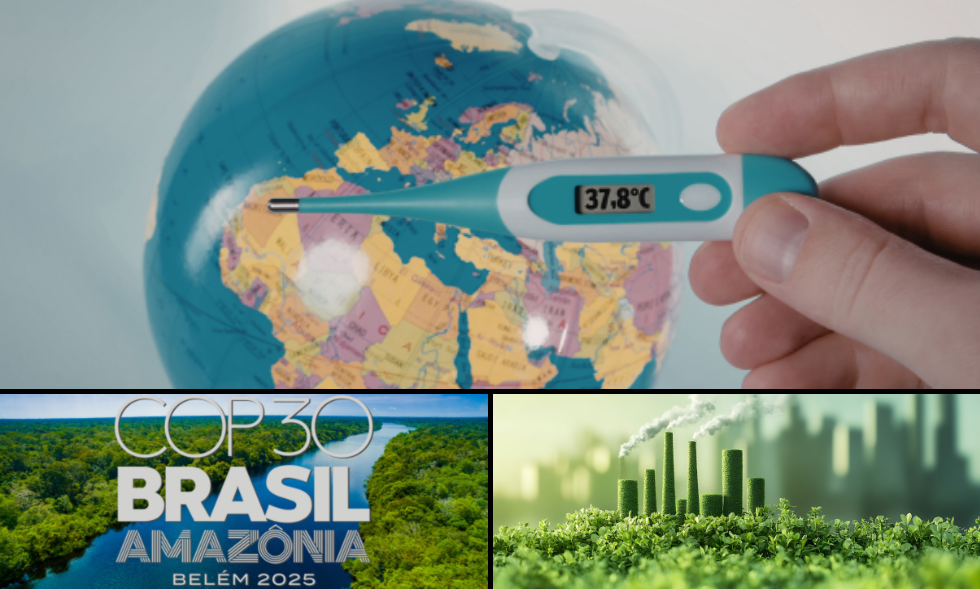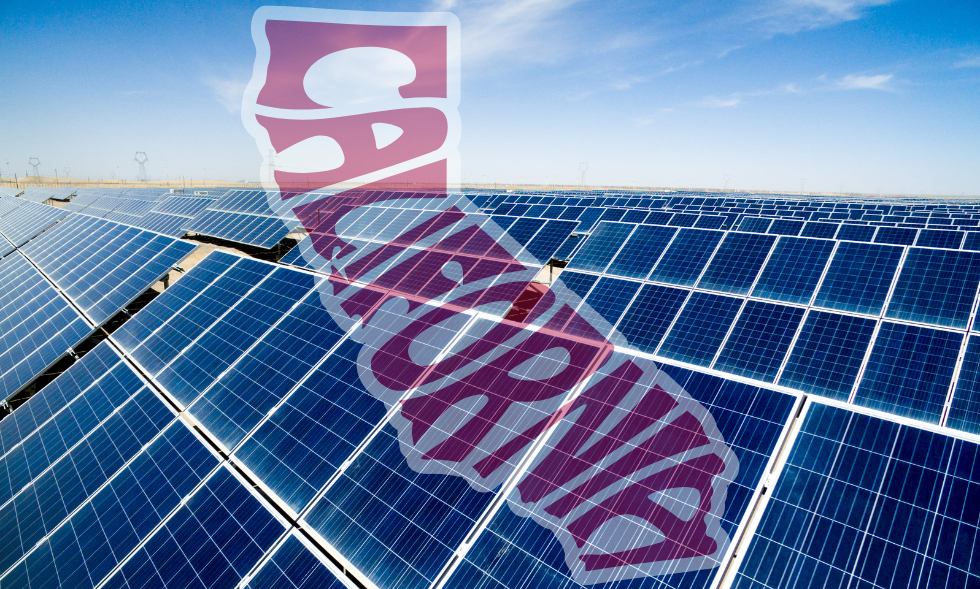IN THIS ISSUE:
- A Meaningless Number Drives Climate Policy
- Critical Minerals Environmental Impact Gets COP 30 Mention Before Being Dropped
- Green Energy Threatens Europe’s Power Supply and Economy

A Meaningless Number Drives Climate Policy
A recent study published in the Journal of American Physicians and Surgeons argues the trillions of dollars spent to fight climate change are being wasted in a vain and unnecessary effort driven in large part by the focus on an essentially meaningless and made-up metric: global mean surface temperature (GMST).
Study author Jonathan Cohler points out GMST is a made-up and poorly defined metric:
[T]he GMST does not have a precise regulatory definition, and is in fact physically meaningless based on fundamental principles of thermodynamics. Nevertheless, all IPCC climate models are tuned to reproduce historical GMST trends. This represents what Orwell presciently described: the systematic replacement of objective truth with politically convenient fiction
Cohler notes that the fundamental principles of thermodynamics were firmly established by the last quarter of the nineteenth century, defining warming as a transfer of energy into or within a system as measured by joules or watt-seconds, not changes in measured degrees Celsius.
A recent AI analysis of the claims of warming based on purported changes in temperatures confirmed the methodologies and assumptions used by the IPCC to designate and forecast temperatures are “fundamentally fraudulent” because the project of averaging temperatures is meaningless outside of an equilibrium system, which the Earth and its various climates are not. Also, to measure average temperature change, one must work within a common designated system of measurement, yet the IPCC contributors don’t do this. Per Cohler:
Temperature is an intensive property [a characteristic of a substance that does not change with the amount of matter present, such as density, temperature, color, or boiling point, etc.] that is defined only in equilibrium systems and cannot be meaningfully averaged across non-equilibrium systems. The Earth’s surface air and ocean water is a large non-equilibrium system with enormous spatial and temporal variations in temperature, pressure, humidity, and heat capacity, in addition to the more than 800-fold mass density difference between sea water and air. It is well understood that as an intensive thermodynamic property, temperature is neither additive nor meaningfully averageable across such a system, in contrast to extensive properties such as energy, mass, and volume, which scale directly with the amount of matter and can be summed over subsystems. As Essex et al. demonstrate, there is no physical principle that dictates how surface temperatures should be averaged globally to produce a meaningful statistic, making any such human-chosen averaging methodology arbitrary, resulting in a statistical artifact with no physical meaning.
This arbitrariness is not a minor technical detail. There are infinite ways to average temperatures—arithmetic mean, geometric mean, harmonic mean, root mean square, and the entire family of Hölder means, among infinitely many others. Each method produces different numerical results and different trends over time. Without a physical principle to select one averaging method over another, the choice becomes purely arbitrary. As the Essex paper conclusively demonstrates, “if the physics does not prescribe one averaging rule to be used over another, as it does not for temperature, we may use any rule. If one interpreter of the data chooses one rule while another chooses a different rule, there is no way to settle a disagreement as to whether the system is getting warmer or cooler with time.”
The computer and logic principle of Garbage In, Garbage Out applies to climate claims. As Cohler notes, since the GMST used to support the claim of dangerous global warming is unscientific and arbitrary, all the feedback mechanisms and outputs describing future states of the Earth’s climate that computer models project are equally ungrounded and arbitrary:
The implications extend far beyond academic thermodynamics. Every climate model used by the IPCC (CMIP models) is tuned to reproduce historical GMST trends. When models are calibrated to match a physically meaningless quantity, their outputs become equally meaningless—not just for temperature projections, but for all variables, since these are coupled global circulation models where all components interact. The fundamental principle of scientific modeling requires that models be validated against physically meaningful observables.
In short, Cohler argues, to “regain legitimacy and contribute meaningfully to understanding the Earth’s complex thermal systems,” climate science must stop using derivative metrics such as climate sensitivity and instead stick to fundamental physics.
Sources: Globe News Wire; Journal of American Physicians and Surgeons

Critical Minerals Environmental Impact Gets COP 30 Mention Before Being Dropped
The recently concluded 30th Conference of the Parties to the U.N. Framework Convention on Climate Change (COP 30) spectacularly failed to address any of the issues it was called to consider. Did they secure more committed funding for developing countries? No. Did they establish a new agreement to significantly cut carbon dioxide emissions by ending fossil fuel use. No. Ending fossil fuels use wasn’t even mentioned in the final agreement.
There were myriad other policy topics the negotiators at COP 30 were supposed to tackle that didn’t get done, but one among them—an issue Luiz Inácio Lula da Silva, president of host country Brazil, specifically raised before the conference—was ultimately jettisoned from the final conference documents: critical minerals and rare earth elements, materials that are the foundation and necessary components of the renewable energy technologies that are supposed to supplant fossil fuels and thereby reduce the threat of climate change.
While the mainstream media ignored the issue, Miningtechnology.com, an interested media outlet if ever there was one, noted that in the week prior to COP 30 at a “World Leaders Summit,” da Silva told the assembled power brokers, “We cannot discuss the energy transition without addressing critical minerals, which are essential for the production of batteries, solar panels and energy systems.”
Yet China, which controls the critical minerals market from mining through refining, and Beijing’s ally Russia squashed any talk of a “just transition” to more-equitable sharing of minerals, respect for human rights, and environmental protection.
An initial draft of the Just Transition Work Programme document released by the United Arab Emirates contained a clause citing “the social and environmental risks associated with scaling up supply chains for clean energy technologies, including risks arising from the extraction and processing of critical minerals, recalling the principles and recommendations outlined in the report of the United Nations Secretary-General’s Panel on Critical Energy Transition Minerals.” This language was modified on November 17 to cite
… the importance of developing reliable, diversified, sustainable, transparent and responsible supply chains for clean energy technologies, including through environmentally and socially responsible extraction and processing of critical minerals, and of stakeholder engagement and consultation, including through inclusive community engagement across entire value chains with representatives of industries, businesses, workers and local communities.
By the time all the “i’s” were dotted and “t’s” crossed on the final language, critical minerals and rare earths weren’t mentioned at all, MiningTechnology.com points out.
Teresa Anderson, global lead on climate justice at ActionAid International, expressed disappointment in this failure, the website reports:
“It is deeply disappointing that the final words of text on the just transition mechanism don’t specifically refer to the mineral sector,” [said Anderson] although she adds that “there is still scope to make sure the work on improving the rights of communities involved in minerals and metals mining takes place.”
Whatever one’s thoughts on a just transition (or even the need for a transition at all) and the equities involved in critical mineral development, the failure of COP 30 to address it is unsurprising considering the COP process’s 30-meeting track record of failure to meet any of the goals, targets, or commitments the governments involved have set for themselves across numerous agreements and treaties signed since the U.N. Framework Convention on Climate Change was established in 1992.
Source: Mining-Technology.com

Green Energy Threatens Europe’s Power Supply and Economy
2025 could come to be characterised as the year the lights began to flicker across Europe as threats to energy security begin to manifest. We almost ran out of electricity in Britain in January. We did have a blackout at Heathrow Airport in March and Iberia suffered a full peninsular blackout in April. We also had warnings that accelerated decline of North Sea gas production might threaten the viability of key pipelines leading to winter gas shortages that would threaten the power sector.
So opens a deft insider’s analysis of the power problems facing Europe due to its headlong, ill-considered embrace of a net zero future powered by wind and solar power, on the Watt-Logic blog. The author, Kathryn Porter, an independent energy consultant with experience on both the physical and financial ends of the development of electricity, gas, and oil markets, knows of what she speaks. Before she formed her own consulting firm, she worked at various times on public and private financing, focusing later in her career on energy infrastructure and development at Deloitte, Commerzbank, Barclays Capital, Societe Generale, and Centrica.
Porter’s post goes through a detailed analysis of the mismatch between the supply and demand for electricity conducted by Britain’s National Energy System Operator (NESO). Porter found the Balance Mechanism Reporting System, which is charged with tracking supply and demand conditions (in part to identify shortfalls), found that on some days the misestimates and shortfalls topped 6 gigawatts, or 18 percent of demand. For 2025 as a whole, the errors were nearly 23 percent of demand on day-ahead estimates of demand and available supply, Watt-Logic concluded.
The problems in the U.K. include a blackout at Heathrow, the busiest airport in Europe and fifth-busiest by passenger traffic in the world, and a near-blackout across the country. Continental Europe faces similar problems caused by its various governments’ embrace of wind and solar power as primary power sources. The Watt-Logic article cites the Iberian power outage that shut down Spain, Portugal, and parts of France, in addition to warnings that a sharp, premature decline in North Sea oil and gas infrastructure could lead to shutdowns of the pipeline and cause gas shortages during the winter when it is needed not just for electric power but heating.
The full post is an interesting read detailing how political and fiscal changes and challenges in different European countries make it more or less likely they will be able to solve their self-induced energy problems in the short term. Political and budgetary obstacles may make it hard to shift back to fossil fuels and nuclear for baseload power across Europe and Britain, but unless those nations embrace such a reversal, wider-scale and more-frequent power outages could become common across the EU and the U.K.
Sources: Watt-Logic




